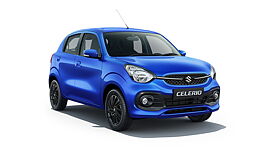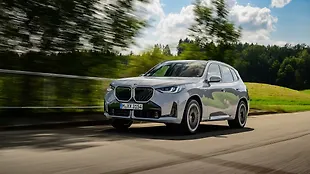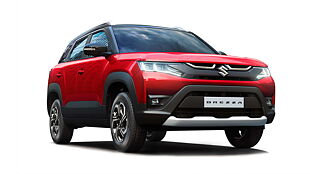Introduction
When we first drove the new Celerio in November last year, we had left a few questions unanswered that we thought of resolving upon its extensive driving. Ending the wait, the Celerio 1.2 ZXI Plus AMT recently joined our long-term garage.

And we have now spent a good amount of time with it, so why not take a look at five reasons why you should buy the new-gen Celerio and two reasons why you shouldn’t.
Positives
1. Perfect city car

The Celerio is an example of what a perfect city car should be like. Its small footprint, ease of driving — especially helped with this automatic gearbox, great visibility all around, and light controls make it a comfortable car to live with. It’s also small enough to wriggle through those tiny gaps in the traffic. And with the good all-around visibility, it becomes easy to get a good judgment of the spaces in city traffic.

It's also easy to get in and out of. The doors open wide, and the entry is pretty smooth, be it for the front seats or the back. You also get an adjustment for the seats and the up-down adjustment of the steering. This helps a lot as even tall drivers can find their ideal driving position with ease.
2. Cabin space is good for its size
The new Celerio has grown in dimension. It’s considerably larger than the older one, and that reflects on the inside. There’s a good amount of space upfront, so you are not rubbing elbows with your passengers.

Even at the back, two passengers can be seated conveniently and, if required, three can fit in just fine too. The tall roof also ensures that taller passengers don’t find it too cramped here. And the large windows help prevent the passengers from feeling claustrophobic. Even the boot space at 313 litres is just a little short of what you get in the new Brezza.
3. Engine Performance

One thing that still leaves us wanting more is the fact that Maruti Suzuki has decided to not offer the 1.2-litre four-cylinder K12 engine with this Celerio. We anticipated it before its launch since the Wagon R received a similar platform and engine upgrade. But it has been a year, and even though its sibling, the Wagon R, has received the updated K12C engine, there’s no sign of the four-cylinder engine making its way here. With the bigger engine, the appeal of the Celerio would have been much higher. Its mile-munching capability would also have seen an upsurge with that engine. Nonetheless what we have here is the K10C.

It’s a 1.0-litre three-cylinder naturally-aspirated petrol engine which has undergone a lot of internal changes to achieve one thing– fuel efficiency. That said, the power output of this engine is 66bhp and 89Nm.
Although it is slightly noisy and a tad vibey but far from what you’d expect from a three-cylinder engine. It’s also ready to race towards the redline when pushed. In fact, there’s enough push if you have to rush in the traffic or overtake on the highway; this peppy engine comes through without complaint.

Moreover, it is as comfortable munching miles at 80-90kmph with five on board as it is happy when crawling at city speeds — making the best of those odd gaps. Then there’s a good amount of grunt available and it's pretty predictable too. The light controls also go a long way in making it a perfect companion for everyday driving in our urban jungles. Add to it the convenience of an AMT and the Celerio makes a good car for first-time buyers.
4. Fuel Efficiency

Maruti claims this to be the most fuel-efficient petrol engine today. Compared to the older K10 engine, there are lighter components used all around and the dual fuel injectors now offer better atomisation. Even the exhaust gases have better emission control, making the K10C BS6 Phase Two compliant as well. The claimed fuel efficiency of the Celerio is around 26kmpl depending on the version and the gearbox you buy.

So, we subjected this Celerio AMT to our rigorous and consistent fuel efficiency test. And at the end, in the City run the Celerio returned a fuel efficiency of 18.42kmpl and out on the highway, it managed a handsome 23.18kmpl. That brings the overall fuel efficiency to just under 20kmpl (19.61kmpl, to be exact). That’s pretty impressive in real-world conditions for a five-seater compact hatchback.
5. Option of CNG

The last time we drove the Celerio, the CNG wasn’t on sale. It came in January this year and in just one variant – VXI. The price difference between the standard VXI and the VXI CNG is Rs 95,000, on the ex-showroom price. It uses the same engine with a manual gearbox as standard. But compared to the standard, the K10C in the CNG produces less power – 66bhp and 89Nm. So, if you commute extensively in and around the city, and the fuel prices are getting to your nerves, the CNG-powered Celerio should be a good bet. It will be slightly lighter on your pocket, and you won’t lose out much in terms of creature comfort and everyday usability.
Negatives
1. Expensive with fewer features

Compared to the older Celerio, the new one is surely quite expensive. This very version is over Rs 1.40 lakh more expensive than the equivalent version of the previous-gen Celerio. Not only that, if we compare the Tiago and Celerio in their respective top-spec versions, the Tiago offers more features like projector headlamps, LED DRLs, follow me home lamps, dual-tone paint job, cooled glove box, voice command and four extra speakers, and a rearview camera. And the top-spec version of the Tiago XZ AMT isn’t much expensive than this ZX+ AMT of the Celerio.
2. Jerky AMT

Now, the AMT does bring you a lot of conveniences, especially in bumper-to-bumper traffic which we find so often these days. But there’s a slight trade-off. At low speeds when rolling off the line, it tends to hold the first and second gear slightly longer than required. This makes the throttle bit erratic. However, this disappears as the speed builds up and it works up the gear. Also, when slowing down, you can feel the gearbox working down the cogs with its abrupt downshifts. gear. On the upside, you do get a manual mode if you want to take control of your gearshifts.

We have sampled the manual gearbox and its slick-shifting nature and short throws with a light clutch makes it much more involving to drive. Even the added control in the manual makes the drive smoother compared to the self-shifting AMT. That said, newer drivers and first-time buyers won’t have any problems with this AMT whatsoever. But for us, we’d take the five-speed manual.
Conclusion

Pricing for the new-gen Maruti Suzuki Celerio starts at Rs 4.99 lakh and goes all the way up to Rs 6.94 lakh, ex-showroom, for the top-spec AMT we have driven here. The competition in this space for the Celerio is the Tata Tiago, its sibling Wagon R, and some versions of the Swift and Nios.

What the Celerio has got going for itself is that it’s a convenient city car, has a very fuel-efficient engine, a CNG option, and the convenience of an automatic. Not to mention, it also makes for a good first car as well as a convenient runabout since it is a well-rounded compact hatchback that’s easy and convenient to live with, without burning a hole in your wallet.
Pictures by Kapil Angane and Kaustubh Gandhi

























